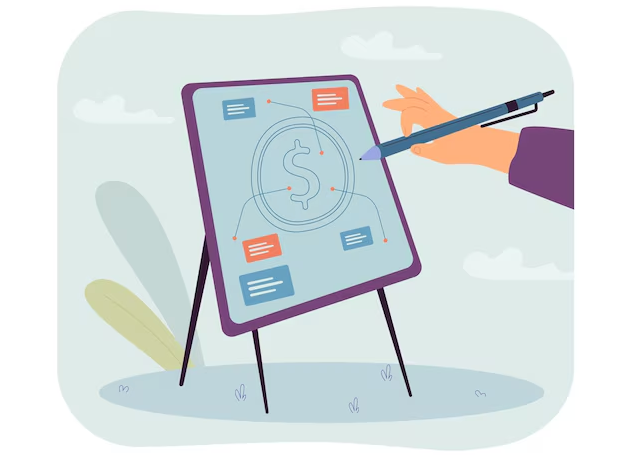Navigating the landscape of personal loans in the United States demands a deep understanding of available options and careful strategic decision-making. This financial tool, while versatile, requires a clear grasp of its intricacies to ensure borrowers make informed and conscious choices. In this comprehensive guide, we aim to demystify the complexities of personal loans, empowering individuals to make decisions aligned with their financial objectives.
Personal loans offer flexibility, addressing diverse needs such as debt consolidation, emergency expenses, home improvement projects, or significant life events. They are particularly appealing for their fixed interest rates and structured repayment plans. However, selecting the right loan involves evaluating critical factors, including interest rates, loan terms, fees, and eligibility requirements. By understanding these elements, borrowers can avoid pitfalls and maximize the benefits of personal loans.
Personal loans in the United States: Strategies for informed decision-making

Understanding the landscape of personal loans
Personal loans, often unsecured, provide borrowers with a lump sum amount that can be used for a variety of purposes. The key features that distinguish personal loans include fixed interest rates, predetermined repayment periods, and the absence of collateral requirements.
- Interest rates and loan terms: One of the critical factors influencing the cost of a personal loan is the interest rate. Borrowers should carefully compare interest rates among lenders, considering fixed and variable options. Additionally, evaluating the loan terms, such as the repayment period, is essential to gauge the overall affordability of the loan.
- Credit scores and eligibility: Personal loans are typically influenced by the borrower’s creditworthiness. Lenders use credit scores to assess risk, impacting the interest rates and loan amounts offered. Understanding one’s credit score and eligibility criteria helps borrowers identify suitable lenders and increases the likelihood of securing favorable loan terms.
- Fees and additional costs: Beyond interest rates, borrowers should be mindful of associated fees and costs. Origination fees, prepayment penalties, and late payment fees can significantly impact the overall expense of the loan. Conducting a thorough review of the fee structure ensures borrowers are aware of the complete financial implications.
Strategies for informed decision-making
- Assessing financial needs: Before pursuing a personal loan, individuals should conduct a comprehensive assessment of their financial needs. Whether it’s consolidating high-interest debt, covering medical expenses, or financing a home improvement project, aligning the loan purpose with specific financial goals ensures a more targeted and responsible approach to borrowing.
- Comparing lenders and offers: The personal loan market is diverse, with various lenders offering distinct terms and conditions. Borrowers should invest time in comparing multiple lenders, considering not only interest rates but also reputation, customer reviews, and the overall borrower experience. Online tools and platforms simplify the comparison process, allowing borrowers to make informed choices.
- Creating a realistic repayment plan: A crucial aspect of responsible borrowing is creating a realistic repayment plan. Borrowers should assess their monthly budget, factor in the loan repayment, and ensure that the installment amounts are manageable. Understanding the implications of the loan on one’s overall financial health is fundamental to avoiding unnecessary strain.
Loan repayment strategies
Repaying a personal loan demands a carefully planned strategy to maintain financial stability and avoid unnecessary stress. One effective approach is setting up automatic payments, which ensures timely repayments and helps avoid late fees. Another option is switching to bi-weekly installments, which can reduce the loan’s overall interest by accelerating the repayment process.
Equally important is understanding the terms of early repayment. While paying off a loan ahead of schedule can save on interest, some lenders impose prepayment penalties. Familiarizing yourself with these terms allows borrowers to weigh the benefits against potential costs and choose a repayment plan that aligns with their financial goals.
Moreover, creating a detailed budget can help allocate resources effectively, ensuring that loan payments remain manageable alongside other financial obligations. By adopting a proactive and informed approach, borrowers can successfully repay personal loans while safeguarding their financial health and working toward long-term stability.
Exploring alternative lenders and credit unions
While traditional banks are often the first choice for personal loans, exploring alternative lenders and credit unions can open doors to unique opportunities. Credit unions, for instance, are member-focused organizations that frequently provide competitive interest rates and borrower-friendly terms, often better than those found at conventional banks. These institutions are particularly advantageous for individuals with less-than-perfect credit, as they may consider a borrower’s overall financial situation rather than relying solely on credit scores.
Similarly, online lenders have emerged as viable alternatives, offering streamlined application processes, quick approvals, and flexible terms. Peer-to-peer lending platforms are another option, connecting borrowers directly with individual investors willing to fund loans, sometimes at more favorable rates.
By venturing beyond mainstream financial institutions, borrowers can access a wider array of options tailored to their unique needs. Thoroughly researching and comparing these alternatives can lead to more advantageous loan conditions, ultimately supporting better financial outcomes.
Safeguarding against loan scams
As personal loans gain popularity, the risk of encountering scams has also increased, making vigilance essential for borrowers. To protect themselves from fraudulent practices, individuals should take several precautions. Start by verifying the legitimacy of lenders through thorough research, including checking online reviews and ensuring they are registered with relevant regulatory bodies. Trustworthy lenders are transparent and will not pressure borrowers into making hasty decisions or demand upfront fees.
Carefully reviewing loan agreements is another critical step. Pay close attention to the terms and conditions, ensuring there are no hidden fees or clauses that could lead to financial pitfalls. If something seems unclear, seek clarification before proceeding.
Additionally, utilize reputable online resources to identify verified lenders and stay informed about common scams. By remaining cautious and informed, borrowers can confidently navigate the borrowing process and ensure a secure, trustworthy experience while avoiding financial harm.
In conclusion, personal loans in the United States provide a versatile financial resource when approached thoughtfully and strategically. By carefully considering factors such as interest rates, credit scores, loan terms, and associated fees, borrowers can align their choices with specific financial goals and long-term plans. This conscious approach ensures that personal loans serve as a tool for growth rather than a source of financial strain.
A comprehensive understanding of the loan process, combined with thorough research and due diligence, equips individuals to navigate this financial avenue confidently. Borrowers should prioritize working with reputable lenders, reviewing terms carefully, and exploring alternatives such as credit unions or online platforms to secure the best possible conditions.






